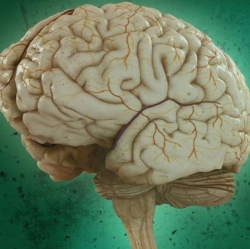
Currently, diagnosing autism is more of an art than a science. To determine whether a kid has the disorder, trained professionals look for behaviors that are characteristic of the condition, for example, failure to make eye contact, or repetitive mannerisms.
Although these methods have proven effective for years, researchers still hope to find a more objective way of diagnosing autism. Now, new research suggests that a child’s brainwaves may hold the key. Scientists at the Albert Einstein College of Medicine at Yeshiva University have discovered a significant relationship between the severity of a child’s autism and the way his or her brain processes different sight and sound stimuli. And fortunately, they can measure this brain activity in an easy, non-invasive way.
According to study leader Sophie Molholm, it’s possible that the autistic brain has a much more difficult time processing all of the information it receives from the body’s sensory systems. “We have to organize all of this incoming information, and it’s a big and important task for the brain,” Molholm tells Popular Science. “There’s possibly a break down in how this information is processed, and that may be related to some of the symptoms of autism.”
